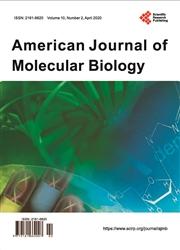Evaluation of DNA Extraction Methods for Detection of Leishmania by Polymerase Chain Reaction
引用次数: 0
Abstract
There are several methods used to obtain DNA from cells; however, the quantity, integrity, and purity of DNA vary among the methods, which may interfere with the polymerase chain reaction (PCR) results. The objective was to determine the most efficient and cost-effective method that provides the best DNA yield and PCR results. Three methods of DNA isolation were compared: 20% sodium dodecyl sulfate (SDS), guanidine isothiocyanate-phenol-chloroform (GTPC), and DNA extraction using a commercial kit (GE Healthcare GenomicPrep Blood DNA Isolation KitTM). Human peripheral blood samples were inoculated with 104 promastigotes of Leishmania infantum. DNA was quantified and PCR was performed with 13A/13B primers. The results showed that a higher DNA yield was obtained using the GTPC technique (214.51 ng/μL), followed by SDS (26.16 ng/μL) and the commercial kit (10.99 ng/μL). We concluded that while all of the techniques were effective for obtaining DNA, the GTPC method provided the best yield and the brightest bands.聚合酶链反应检测利什曼原虫DNA提取方法的评价
有几种方法可以用来从细胞中获得DNA;然而,DNA的数量、完整性和纯度因方法而异,这可能会干扰聚合酶链式反应(PCR)的结果。目的是确定提供最佳DNA产量和PCR结果的最有效和最具成本效益的方法。比较了三种DNA分离方法:20%十二烷基硫酸钠(SDS)、异硫氰酸胍苯酚氯仿(GTPC)和使用商业试剂盒(GE Healthcare GenomicPrep Blood DNA isolation KitTM)提取DNA。用104个婴儿利什曼原虫前体接种人外周血样本。对DNA进行定量,并用13A/13B引物进行PCR。结果表明,GTPC技术的DNA产量较高(214.51ng/ml),SDS(26.16ng/ml)和商业试剂盒(10.99ng/ml)次之。我们得出的结论是,虽然所有的技术都能有效地获得DNA,但GTPC方法提供了最好的产量和最亮的条带。
本文章由计算机程序翻译,如有差异,请以英文原文为准。
求助全文
约1分钟内获得全文
求助全文

 求助内容:
求助内容: 应助结果提醒方式:
应助结果提醒方式:


